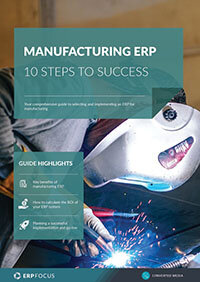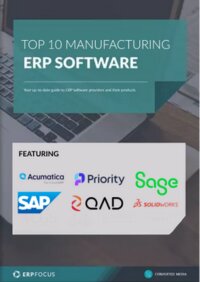8 Manufacturing ERP Features Explained
Supply Chain
Your supply chain includes all the links that supply your business with materials. Metal for a wire comes from a producer that extrudes the metal from an ingot. Another business smelted the copper and produced the ingot. Previously another business dug the ore from the ground. A business has many items they purchase and each can have its own supply chain. The business itself is part of their customers’ supply chain. Some chains include third parties such as warehousers or transportation providers. Your manufacturing ERP should provide you with a transparent view of your company’s supply chain whilst co-ordinating each link in the chain.
Order Management
Orders are a generic term that combines some categories of supply and demand. A sales order represents a demand; a customer has placed an order requesting delivery of a certain quantity be an agreed-upon date. A purchase order is a request on a supplier to deliver component materials. Your ERP should manage these orders whilst monitoring key metrics which can help with forecasting and decision making.
Kitting and Fulfillment
Kitting is the process where component materials for a production order are collected from the warehouse and delivered to manufacturing to begin production. Often materials for an order will be delivered all at once and other times only the components for a particular operation will be delivered. Your manufacturing ERP system should manage this. Fulfillment is a similar process. Items in a warehouse are taken from bins for delivery. The difference is that with fulfillment, the delivery is shipping to fill customer orders.
MTO
Make to order is a kind of manufacturing where production is only to satisfy customer demands. Often the product is specifically made for a single customer and there would be no reason to build ahead to inventory and hope for the next order. This requires its own processes within an ERP distinct from those used in MTS manufacturing.
MTS
Make to stock is a kind of manufacturing where production is completed and the finished items are moved to inventory waiting for a customer order. These products usually have an ongoing demand and the risk is manageable. This method is used where customers require delivery with a lead time shorter than necessary production time.
Planning
Planning is an ongoing process in any manufacturer. The planner’s job is to balance a continuously changing state of supply and demand. A PO delivery is late; how do we need to react? A customer asks to place an unexpected order with an immediate delivery; can we satisfy his request? The manufacturing ERP system will signal these out-of-balance situations.
Scheduling
Scheduling is a subset of planning in a manufacturer. Given a set of customer demands and materials on hand now and due to arrive soon, what is the capacity of machinery and trained people to produce the order? Bottleneck processes need to be kept fed at all times. Some orders might be run on older equipment to free up the newer equipment for orders that cannot be moved.
Lot / SN
Lot numbers and serial numbers are methods to identify specific units or batches of production. A serial number is assigned to a single, discrete unit of production. A lot number will be assigned to all the output today or maybe only today’s output that was made from a particular batch of a supply ingredient. In many industries there is a need to track every component material and person who worked on a particular item sold within the manufacturing ERP system. If there is a failure in wiring of an airplane, the manufacturer will want to know every plane that was built with that specific batch of wire.
Free white paper

Manufacturing ERP: 10 steps to success
Complete step-by-step guide to manufacturing ERP software

Featured white papers
Related articles
-

ERP for make-to-order manufacturing
How can ERP help your make-to-order manufacturing business thrive?
-

Secret KPI: Why Your ERP Implementation Team Matters More Than Software
Learn how Godlan ensures successful ERP implementation for manufacturers with proven strategies &...
-

Shop floor management: 4 ways ERP can improve efficiency
Learn about the shop floor efficiencies that can be realized through the implementation of manufa...



